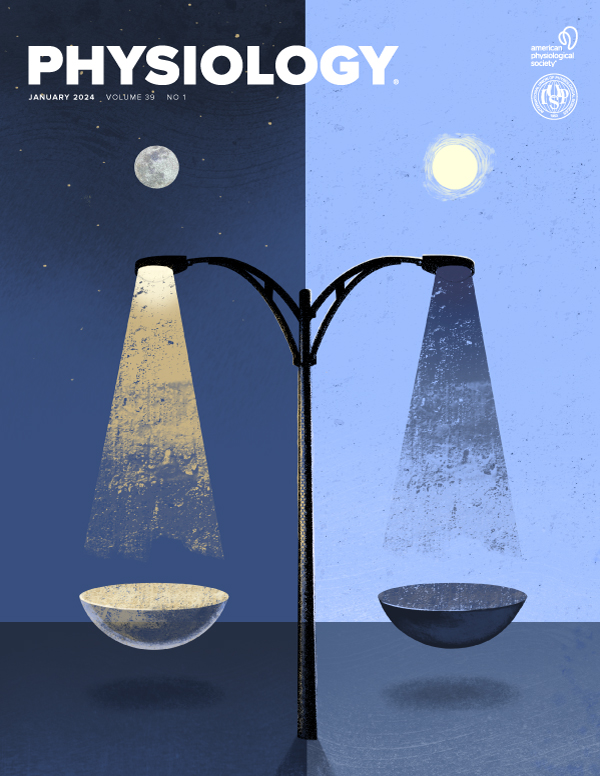Brachial artery flow-mediated dilation during incremental handgrip exercise is not impacted by sex or female sex hormones
IF 5.3
2区 医学
Q1 PHYSIOLOGY
引用次数: 0
Abstract
Sex differences exist in reactive hyperemia flow-mediated dilation (RH-FMD), with males demonstrating larger RH-FMD responses than naturally menstruating females and females using oral contraception (OC). This difference is thought to be partly attributed to sex hormones. Among females, some studies demonstrate lower RH-FMD in females using OC relative to naturally menstruating females. To date, non-invasive assessments of endothelial function in males, naturally cycling females and females using OC have only been completed using RH-FMD. Notably, due to differences in the shear stimulus during sustained shear-induced FMD (SS-FMD) versus the transient pattern observed with RH-FMD, SS-FMD may provide distinct insight into endothelial dysfunction undetected with RH-FMD. Therefore, we hypothesized that the SS-FMD responses to incremental handgrip (IHG) exercise would be greatest in males, and that females using OC would have the smallest increase in SS-FMD compared to males and naturally menstruating females. The IHG protocol consisted of 3-minute stages of rhythmic handgrip exercise at 15, 30, and 45% of an individual’s maximal voluntary contraction (MVC) force, with no rest period between MVC transitions. Brachial artery diameter and blood velocity were measured simultaneously via duplex Doppler ultrasound in 10 males (26±4 [mean±SD] years), 11 naturally menstruating females (25±4 years), and 9 females using OC (27±5 years) during IHG. Females were tested in the mid-luteal (ML) and active (high hormone) OC phases. SS-FMD and shear rate were analyzed using linear mixed model analyses. MVC was greater in males relative to both groups of females (males: 40±6, ML: 28±8, OC: 26±6 kg; One-way ANOVA: post-hocs P≤0.001). Brachial artery shear rate was not different between males, ML females or females using OC throughout exercise (group-by-stage interaction: P=0.975). Consequently, the brachial artery dilated by 1.3±1.5, 0.1±2.1, and 1.2±3.6 % at 15% MVC, 4.0±3.1, 2.7±3.3, and 4.1±4.8 % at 30% MVC, and 9.1±4.9, 7.3±5.4, and 7.6±5.9 % at 45% MVC, in males, ML females, and females using OC, respectively (all P>0.05). Furthermore, the slopes of the relationship between the change in brachial artery diameter and shear rate was similar between the three groups (Males: 0.0004±0.0002, ML: 0.0003±0.0002, OC: 0.0003±0.0002 Δmm/Δ1·s-1; One-way ANOVA: P=0.564). Taken together, these data indicate that endothelial function in response to sustained elevations in shear stress are not impacted by biological sex or OC use. Supported by the Natural Sciences and Engineering Research Council of Canada, and IEEM indirect funds. This is the full abstract presented at the American Physiology Summit 2023 meeting and is only available in HTML format. There are no additional versions or additional content available for this abstract. Physiology was not involved in the peer review process.在渐进式握力运动中,肱动脉血流介导的扩张不受性别或女性性激素的影响
反应性充血血流介导的扩张(RH-FMD)存在性别差异,男性比自然月经的女性和口服避孕药的女性表现出更大的RH-FMD反应。这种差异被认为部分归因于性激素。在女性中,一些研究表明,与自然月经的女性相比,使用OC的女性RH-FMD较低。迄今为止,仅使用RH-FMD完成了对男性、自然循环女性和使用OC的女性内皮功能的非侵入性评估。值得注意的是,由于持续剪切诱导FMD (SS-FMD)期间剪切刺激与RH-FMD观察到的短暂模式的差异,SS-FMD可能为RH-FMD未检测到的内皮功能障碍提供了独特的见解。因此,我们假设增加握力(IHG)运动的SS-FMD反应在男性中最大,而使用OC的女性与男性和自然月经的女性相比,SS-FMD的增加最小。IHG方案包括三个阶段的有节奏的握力练习,分别为个体最大自主收缩力(MVC)的15%、30%和45%,在MVC转换之间没有休息时间。采用双多普勒超声同时测量10例男性(26±4 [mean±SD]岁)、11例女性(25±4岁)和9例女性(27±5岁)在IHG期间的肱动脉直径和血流速度。女性在黄体中期(ML)和活跃(高激素)OC期进行测试。采用线性混合模型分析SS-FMD和剪切速率。男性的MVC高于两组女性(男性:40±6,ML: 28±8,OC: 26±6 kg;单因素方差分析:术后P≤0.001)。在整个运动过程中,男性、ML女性和使用OC的女性的肱动脉剪切率没有差异(分组交互作用:P=0.975)。因此,在男性、ML女性和使用OC的女性中,15% MVC组的肱动脉扩张率分别为1.3±1.5、0.1±2.1和1.2±3.6%,30% MVC组为4.0±3.1、2.7±3.3和4.1±4.8%,45% MVC组为9.1±4.9、7.3±5.4和7.6±5.9%(均P < 0.05)。此外,三组间肱动脉直径变化与剪切速率的关系斜率相似(男性:0.0004±0.0002,ML: 0.0003±0.0002,OC: 0.0003±0.0002 Δmm/Δ1·s-1;单因素方差分析:P=0.564)。综上所述,这些数据表明内皮功能对剪切应力持续升高的反应不受生理性别或使用OC的影响。由加拿大自然科学与工程研究委员会和IEEM间接资助。这是在2023年美国生理学峰会上发表的完整摘要,仅以HTML格式提供。此摘要没有附加版本或附加内容。生理学没有参与同行评议过程。
本文章由计算机程序翻译,如有差异,请以英文原文为准。
求助全文
约1分钟内获得全文
求助全文
来源期刊

Physiology
医学-生理学
CiteScore
14.50
自引率
0.00%
发文量
37
期刊介绍:
Physiology journal features meticulously crafted review articles penned by esteemed leaders in their respective fields. These articles undergo rigorous peer review and showcase the forefront of cutting-edge advances across various domains of physiology. Our Editorial Board, comprised of distinguished leaders in the broad spectrum of physiology, convenes annually to deliberate and recommend pioneering topics for review articles, as well as select the most suitable scientists to author these articles. Join us in exploring the forefront of physiological research and innovation.
 求助内容:
求助内容: 应助结果提醒方式:
应助结果提醒方式:


